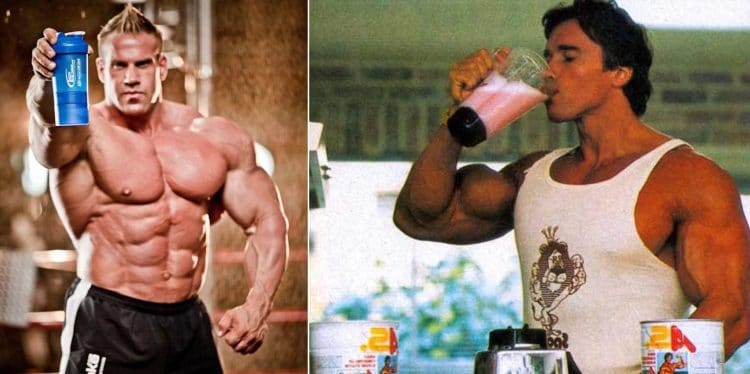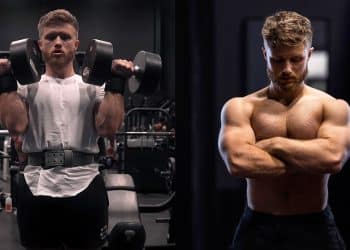Protein timing and its effects on muscular hypertrophy and strength.
Something I am always looking for information on is the topic of meal frequency. In the context of this article, it is specifically whether the day’s protein should be spread evenly throughout the day, or if some other pattern of intake might be superior. One study examined whether providing 25 percent of protein at breakfast and lunch, and the remaining 50 percent at dinner had any impact on nitrogen balance, as compared to spreading the protein evenly across the day’s three meals. The result was there was no difference to how the protein was distributed, as the results of the study were the same regardless of how the protein was distributed.
Recent studies have examined a dietary strategy called protein pulse feeding, that includes 80 percent of the day’s protein to be consumed at lunch, with only 10 percent at the other two meals. This strategy was compared to a more typical eating pattern where the day’s protein intake was distributed evenly across four meals. In elderly women, the pulse pattern led to a greater protein gain compared to the spread pattern. There was a different result in younger women, however, as the spread pattern was superior and led to a greater nitrogen balance.
 There is a considerable amount of data illustrating that a larger amount of the day’s protein around training is beneficial. Other than ensuring adequate protein before, during and after training, there is no real indication that distributing the day’s protein in any pattern other than a basic spread pattern is beneficial, other than the result that was observed in older individuals.
There is a considerable amount of data illustrating that a larger amount of the day’s protein around training is beneficial. Other than ensuring adequate protein before, during and after training, there is no real indication that distributing the day’s protein in any pattern other than a basic spread pattern is beneficial, other than the result that was observed in older individuals.
If you will be consuming 200 grams of protein per day, for example, with 40 grams of that placed around training, that leaves a balance of 160 grams of protein to be evenly distributed across the day’s other meals. With a four meal per day frequency, that yields 40 grams of protein per meal. At a frequency of six meals per day, you would consume roughly 27 grams of protein at each meal.
It is most likely that protein requirements are dependent on the specific goals of the individual. This will determine what is optimal in terms of protein intake. While they were talking primarily about total daily protein intake, this idea can be extended to other aspects of nutrition including protein intake throughout the day, and how it might interact with specific training goals.
Gaining muscle mass, versus maintaining muscle mass at maintenance calories, versus trying to maintain muscle mass under conditions of caloric restriction will all require different optimal intakes of protein.
Due to these differing goals, meal frequency or protein intake pattern will be different also. The possibility exists that different patterns of protein intake, in terms of both timing and type of protein, might exist for these three different goals.
 To keep things simple, I’m going to look at either muscle mass maintenance, which includes dieting, and muscle mass gain. The information I’ll be using to draw the conclusions will be from the different patterns of protein digestion, and how they can influence whole body metabolism.
To keep things simple, I’m going to look at either muscle mass maintenance, which includes dieting, and muscle mass gain. The information I’ll be using to draw the conclusions will be from the different patterns of protein digestion, and how they can influence whole body metabolism.
This is where amount and frequency of protein feedings differ, as large spikes in amino acid concentration appears to stimulate protein synthesis, but somewhat surprisingly has little to no impact on protein breakdown. When maintaining constant low levels of amino acids, protein breakdown is reduced, but with less of an impact on protein synthesis. I find both of those pieces of information to be surprising, as you would think that they would both have the same effect, but apparently, that is not the case. From this information, there are conclusions that can be drawn.
Consuming very large amounts of protein all at once, like the protein pulse studies suggest, has an effect similar to a fast protein such as whey.
This spike of amino acids into the bloodstream promotes protein synthesis as well as oxidation. When the protein is spread out in smaller amounts throughout the day, it has an effect closer to that of casein. Casein is very effective at inhibiting protein breakdown, but with a smaller impact on protein synthesis. I go into detail on the differences between whey and casein in another article.
When this information is considered, it may be best to simply maintain relatively constant low levels of amino acids, with a spike around training, for all goals related to muscle gain as well as retention. This would be similar in strategy to that of keeping insulin low, but stable during the day, with a spike around training. This is essentially the strategy that bodybuilders have agreed is the best for all situations. They eat small amounts of protein, carbohydrates and fat throughout the day, but with a relatively large intake of nutrients around the time of training.
With regards to muscle mass maintenance and dieting, there is a lot of difficulty in stimulating protein synthesis when calories are reduced, so a slow and spread pattern of protein intake is clearly optimal to retain muscle mass, even if little is being built. By maintaining continuously low levels of amino acids throughout the day, in addition to increasing total protein intake, this will limit the body’s need to mobilize stored body protein from muscle and other tissues. A combination of slow proteins combined with evenly spaced meals to keep blood amino acid levels stable throughout the day would seem to be optimal.
 Even though bodybuilders stick to this strategy, with the protein pulse before and after training, is this the optimal pattern for gaining muscle mass? There is a suggestive study where a group receiving three meals per day gained more lean body mass than a group receiving six per day. There is also the research suggesting that maintaining constant levels of amino acids might cause skeletal muscle to become insensitive to further stimulation. Increasing extracellular levels of amino acids, and then allowing them to fall again appears to be superior. All of these data points suggest that keeping blood amino acid levels stable throughout the day might not be optimal from the standpoint of muscle mass gains. I wrote about this specifically earlier.
Even though bodybuilders stick to this strategy, with the protein pulse before and after training, is this the optimal pattern for gaining muscle mass? There is a suggestive study where a group receiving three meals per day gained more lean body mass than a group receiving six per day. There is also the research suggesting that maintaining constant levels of amino acids might cause skeletal muscle to become insensitive to further stimulation. Increasing extracellular levels of amino acids, and then allowing them to fall again appears to be superior. All of these data points suggest that keeping blood amino acid levels stable throughout the day might not be optimal from the standpoint of muscle mass gains. I wrote about this specifically earlier.
In another study, two groups were compared. The first received three whole food meals, while the second received the same three meals with an essential amino acid supplement in-between those meals. The second group generated a greater protein synthetic response than the whole meal group did. The second group that used the supplement also generated an anabolic response, even when the supplement was given in-between meals. This means the previously consumed meal, which was still digesting when the supplement was given, didn’t blunt the effect of the supplement. Also, the supplement also didn’t blunt the anabolic response to the meal.
This study suggests that a potential pattern at least worth experimenting with for those seeking maximal muscle mass gains may be to alternate between slower digesting meals, with faster acting sources. This could be accomplished with a whey protein drink or an essential amino acid supplement throughout the day, in between meals.
It may also prove true that a combination of slow and fast protein sources at each given meal could give the best of both worlds. This would promote a spike in amino acids to stimulate protein synthesis, followed by a slower increase to inhibit protein breakdown. It’s interesting to note that old school bodybuilders often consumed copious amounts of milk to gain lean body mass, and milk protein is a mixture of whey and casein.
Happy Lifting!











